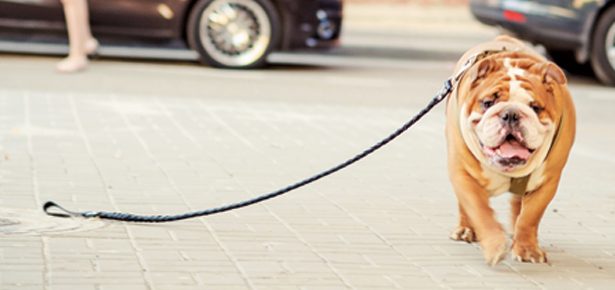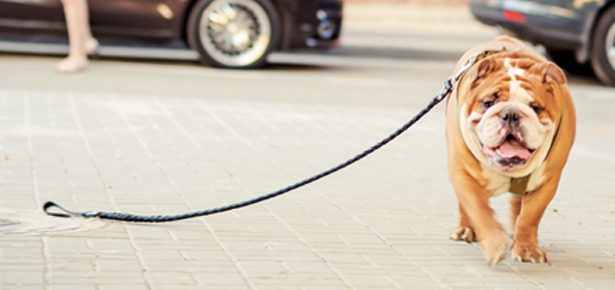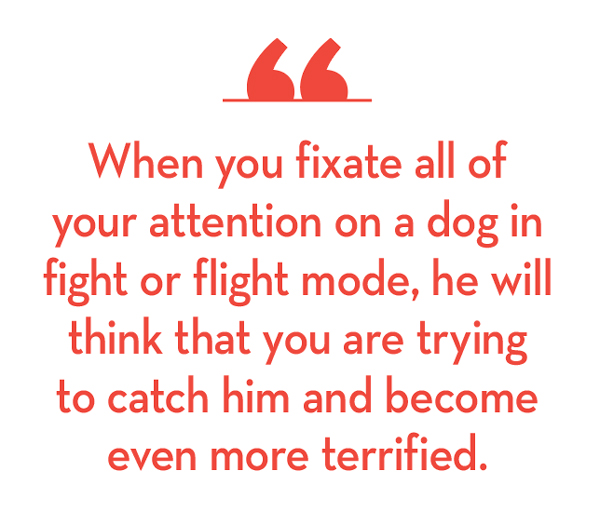

Don’t Call Your Dog! Why You Should Never Call a Stray or Loose Dog
A lost pet recovery expert and educator explains how to best retrieve a dog on the loose
I know—if your dog has escaped and is running loose or if you encounter a stray, it sounds crazy-stupid when I say, “don’t call the dog.” You’re probably thinking, “but he always comes to me when I call him” or “how will I get the dog to come to me then?” The answer is by calming him and attracting him to come to you, and I will explain how to do so. But first let me explain why calling a dog can cause him to run from you (and when a dog runs, pretty much everyone chases after the dog, which is the worst thing you can do!).
Here’s what we know: Dogs that have been scared off by fireworks, thunder, or other traumatic events can be so terrified that they will not even come to their owners. While some dogs will ultimately calm down and then approach people, other dogs will continue to run from everyone. Many dogs with fearful temperaments, such as dogs who were not properly socialized, puppy mill dogs, and dogs that have been through an extremely traumatic experience (perhaps escaped due to a car crash, for example) are in fight or flight mode and will be highly reactive to sounds and movement.
One of the worst things that you can do is call out to a stray or panicked dog. It’s likely other people who have encountered the loose dog have already tried to capture him and thus calling him has become a trigger that causes him to automatically bolt in fear when anyone, including his owner, calls him. In many cases, people try to call the dog as they look directly at him and walk towards him, an action that is dominant and frightening to a scared dog.

I’ve been asked, “If I’m walking through the neighbourhood searching for my dog and I can’t call his name, can I whistle?” The answer is no, because chances are good that if other people encountered your dog, they whistled to him (which many people do because everyone knows that dogs come when you whistle, right?) so whistling will also be a trigger that causes your dog to run. The same goes for slapping your leg and clapping your hands.
Instead, sing to your dog! Yes, really. Pick any tune you like and make up the words as you go along. Singing to your dog will accomplish two things: it will get your voice heard by your dog and it will sound different to your dog than the sounds used by strangers who’ve tried to grab him. Singing will also help you to calm down and hopefully your voice will reflect peace rather than the fear that is projected when you’re worried and calling your dog. (Note that if your dog has a fearful temperament or took off because of a traumatic incident, a silent search is best, but if you need to make noise while searching, then sing while you search!)
If You See Your Dog, Calm Him (But Don’t Call Your Dog)
If, during your search, you encounter your dog, do NOT call out to him and don’t use a coaxing voice. If he is looking at you, immediately sit down. If you see him and he does not see you, start singing, sit down, and look away, which is a submissive gesture. Standing up is a dominant gesture so sitting down is critical to attracting a panicked dog to come to you. Consider faking that you’re eating food on the ground. Better yet, come prepared with a baggie of smelly treats, like pieces of hotdog or liver treats. Potato chip bags are perfect to carry your treats in because they make loud, crinkly noises that dogs associate with food. Keep in mind that sometimes food will work as a lure and sometimes it won’t—it depends on the dog and the level of panic. When dogs are in a full fight or flight mode and their adrenaline is flowing, they may be too distracted for food. This is one of the reasons why, when you try to feed a hotdog to a scared or panicked dog, he oftentimes won’t eat it.
Watch your dog out of the corner of your eye without looking directly at him. Do not walk towards him. One of our volunteers at Missing Animal Response Network captured a tiny terrier that ran from her when she called him but came wiggling up to her once she laid flat on her back and patted her chest. Another of our volunteers captured a panicked dog by getting out of the car with a Frisbee and tossing it back and forth with the dog owner as they both just ignored the dog. Your body language should convey that you are ignoring or haven’t noticed the dog. Calming them down and attracting them to come to you is the key to catching loose dogs. When you fixate all of your attention on a scared dog, he will think that you are trying to catch him and become even more terrified.
Many dog owners don’t believe that their own dog would not come to them and find out the hard way: they call their loose, frightened dog and it has the opposite of the desired effect; instead of attracting him they cause him to bolt. Don’t let this be you. If you see your dog, instead of calling him, sit down on the ground, look away, and start making lip-smacking “nummy, nummy” sounds as you drop treats on the ground, slowly enticing your dog to come to you. I guarantee this non-intuitive approach will result in a much faster reunion!
*Find out more about the Missing Animal Response Course at missinganimalresponse.com.
Make sure your dog never has the opportunity to run away, with these Modern Dog approved leashes and harnesses!
Join the newsletter and never miss out on dog content again!
"*" indicates required fields
By clicking the arrow, you agree to our web Terms of Use and Privacy & Cookie Policy. Easy unsubscribe links are provided in every email.






